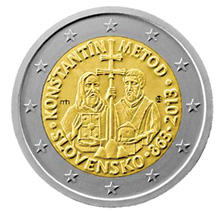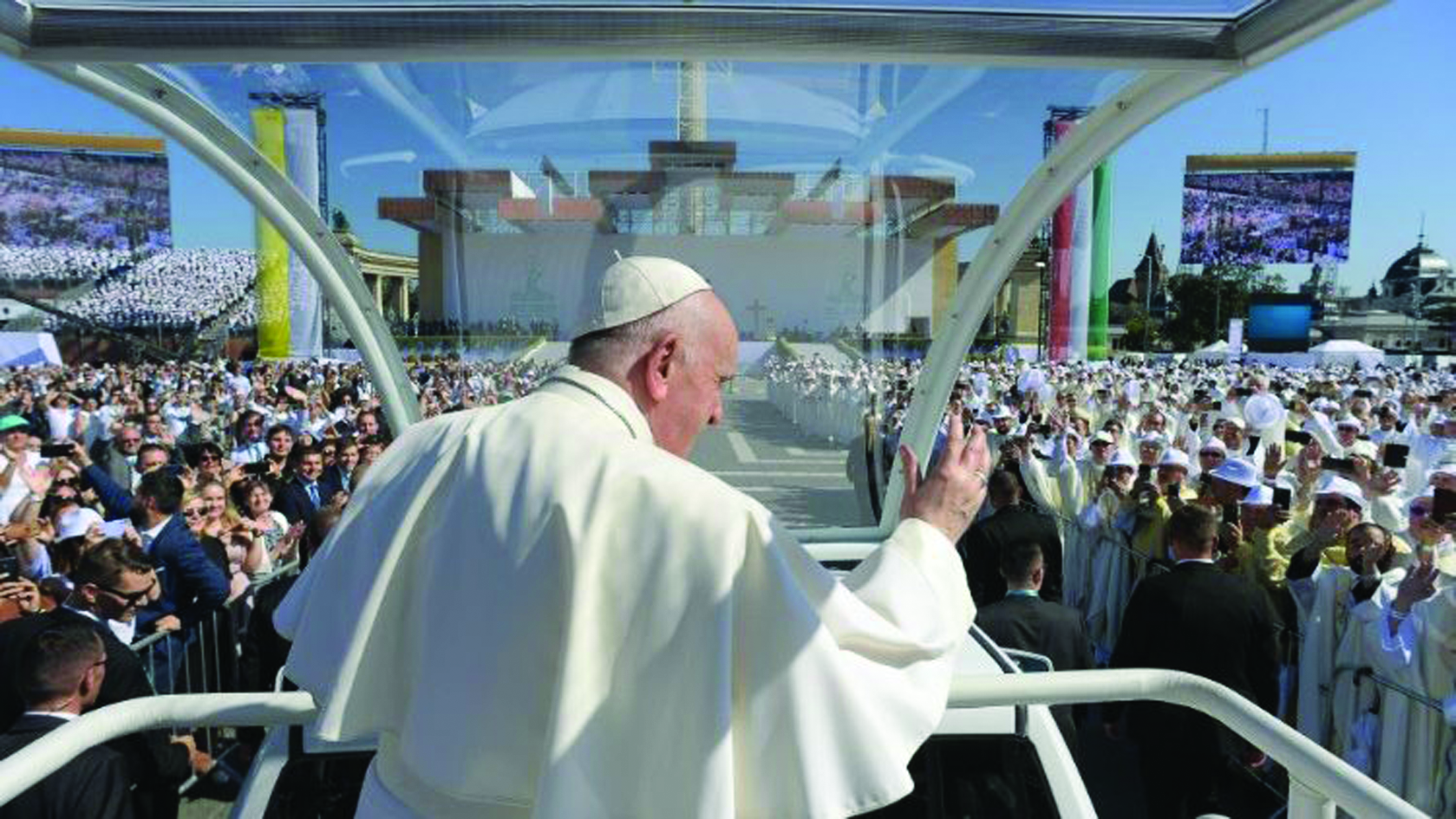 Slovakia decided to mint a special 2-euro coin for the 1150th anniversary of the arrival of Sts. Cyril and Methodius, apostles of the Slavs in Moravia, now part of Slovakia. But…
Slovakia decided to mint a special 2-euro coin for the 1150th anniversary of the arrival of Sts. Cyril and Methodius, apostles of the Slavs in Moravia, now part of Slovakia. But…
Can a 2-euro coin become a way of witnessing to the faith of a people? Perhaps this may happen in a Europe which continues to search for its Christian roots.
The year 2013 is the year Europe will celebrate the 1150th anniversary of the preaching of two of its patron saints, Cyril and Methodius, in the regions which are now part of Slovakia. Celebrations and events are planned in several countries, and some even think that perhaps the Pope might go to Bratislava. Slovakia, a country which in 2009 entered the European Union with many sacrifices, has decided to dedicate a 2-euro coin to the two saints. The sketch is ready and is in fact very simple. The two apostles of the Slavs, haloed, are depicted together with the cross in the middle.
But here lies the problem. Though European Union countries are allowed to make coins for celebrations and anniversaries, it seems they cannot put religious symbols of any kind on them, for the sake of declared “religious neutrality.”

However, Slovakia did not accept this imposition. The Church forcefully expressed her dissent on November 22. “The removal of the essential symbols of Saints Cyril and Methodius from the commemorative coin,” Jozef Kovacik, director of the episcopal conference’s press office, said, “is indicative of a cultural change and a lack of respect for history. The free use of the attributes of Saints Cyril and Methodius shows that totalitarianism was defeated and is a symbol of liberty. If we lose important symbols directly related to the freedom of the Slovak nation, it is also the fault of the responsible Slovak institutions.”
It is said that the veto came from France and Greece. If so, it would be quite strange that the country of the two holy brothers, who were born in Thessaloniki, Greece, would wish to cancel part of its history.

Blessed John Paul II, during his apostolic visit to Azerbaijan and Bulgaria (May 23-26, 2002), looks on as soldiers lay a wreath at the monument to Sts. Cyril and Methodius in Sofia, Bulgaria (Galazka photo)
But the Slovaks have not lost heart. The parliamentary groups of the Christian Democratic Movement (KDH), the Slovak Democratic and Christian Union (SDKU-DS) and some members of Ordinary People and Independent Personalities (Olano) have asked the Central Bank of Slovakia (NBS) to insist on the original artistic proposal for the coin. To remove the halos is like “removing the cross from the Cathedral of St. Martin in Bratislava,” said the popular Slovak member of parliament Anna Záborská. Even stronger was the vice president of the parliament, Erika Jurinova (Olano), who said it was “absurd” to have to obey “the dictates of some officials in Brussels.”And the appeal seems to have found fertile ground because the NBS Bank Board decided on November 23 that the coin will contain religious symbols as in the original proposal, and circulate in all 17 member countries of the Eurozone.
The commemorative 2-euro coin will celebrate the 1150th anniversary of the arrival of Saints Cyril and Methodius in the region of the Great Moravian Empire in the year 863. The two “Apostles of the Slavs” (in 1985 the encyclical letter Slavorum Apostles was dedicated to them) were named by John Paul II Patrons of Europe in 1980, and are represented in iconography with liturgical vestments covered with large crosses and with halos as a sign of their holiness. And in Slovakia they are always accompanied by the pastoral staff with the double cross symbol of the state.
Cyril and Methodius are considered an integral aspect of Slavic identity and as such revered not only in Slovakia, but also in the Czech Republic, Hungary, Croatia, Slovenia and other countries.
This Slovak battle is significant, but has been treated lightly by European newspapers, except for a few Catholic publications. But if Slovakia is “Europe,” it is partly due to Cyril and Methodius. The irony is that no one in Brussels has objected to the Slovenian euro already in circulation with the face of Franc Rozman, one of Tito’s generals, with a large red Communist five-pointed star.

 Slovakia decided to mint a special 2-euro coin for the 1150th anniversary of the arrival of Sts. Cyril and Methodius, apostles of the Slavs in Moravia, now part of Slovakia. But…
Slovakia decided to mint a special 2-euro coin for the 1150th anniversary of the arrival of Sts. Cyril and Methodius, apostles of the Slavs in Moravia, now part of Slovakia. But…




Facebook Comments